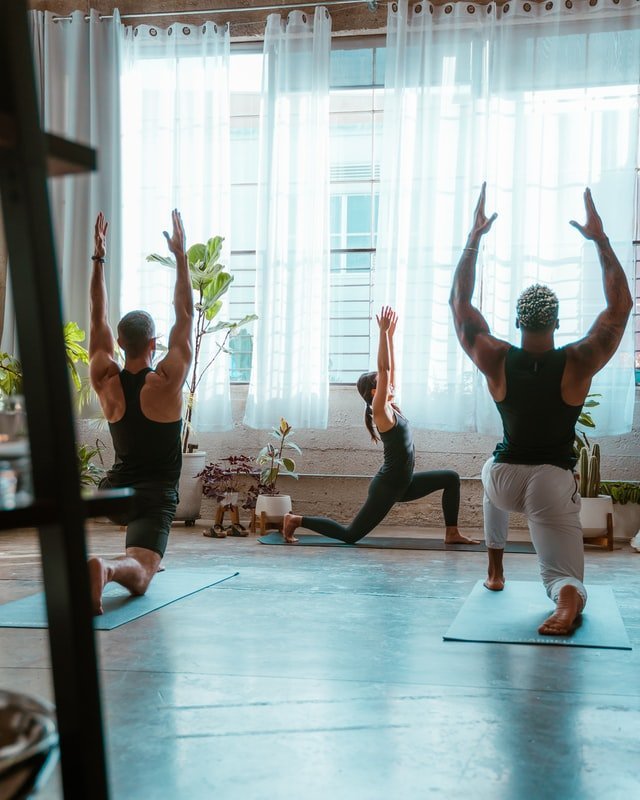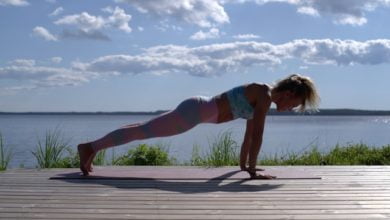Can you build muscle after age 35?

Can you build muscle after age 35?
You likely have a friend or relative who is older than you who tells you that after reaching your late thirties, everything goes downhill.
They groan from the aches and pains, lack of energy and the spread of middle age. They might remind you that it’s common knowledge that we gain fat, lose muscle mass, and decrease strength as we age.
Being on the receiving end of this bad news broadcast can be frustrating. In particular, since it is true that most people tend to lose muscle mass, strength, strength, coordination, and many other signs of fitness as they age.
But just because this is common doesn’t mean it’s normal or taken for granted. Many people accept their fate and assume that strength and muscle loss are inevitable. The common belief is that nothing can be done to prevent it. This belief is wrong and I have a pile of scientific papers about a mile high to prove it.
Recommended: Need help building muscle? Take our FREE Muscle Building Course
Understanding sarcopenia
The scientific name for muscle loss as we age is sarcopenia. Lump is defined as a progressive and generalized musculoskeletal disorder that includes accelerated loss of muscle mass and function associated with increased adverse outcomes including falls, functional decline, weakness, and death.
It affects all of us, but at what age does sarcopenia begin, and how bad is it? A great deal of scientific research has been done on the effect of age on strength, muscle mass, and metabolism over the years. Recently, some groundbreaking research has shed more light on the effect of age and physical ability. As someone approaching their fortieth birthday , I found delving into this research fascinating. What I discovered was hugely exciting and motivating. The good news is that the rate of physical decay that most people accept as normal is not inevitable. In fact, you can block it completely for some time.
Sports give us a false sense of physical climax
I think one of the main reasons people accept that their bodies are in decline when they hit their late thirties is that very few of our most popular sports have athletes who compete at an elite level beyond that age. It seems to be compelling evidence of the inevitable physical stagnation that plagues us all after age 35. If very few NFL, NBA, or MLB players are 35 or older, it must be because father time It catches up with all of us and that mid-30s is when the decline happens. On the surface of things, this seems like a very logical conclusion. However, if you look a little deeper, you’ll see that there are many reasons why Tom Brady is the exception rather than the rule. I have some good news for you – age isn’t the only reason.In fact, in many ways, this is not the main reason. If you apply the information in this article, you can also look and feel, his birthday just like the most successful quarterback in the NFL.
The age of peak physical performance varies greatly from sport to sport. The range is quite wide with some sports favoring athletes in their late teens or early twenties while other athletes are in their forties in their prime. The good news for bodybuilders, strength athletes, and weekend warriors is that most strength and muscle sports tend to peak later in life.
Weightlifters reach their peak on average at the age of 35. 3 In bodybuilding, many of the greats weren’t at their best until they were at least 30 years old. Ronnie Coleman was still winning Olympia titles in his forties, Phil Heath was still leading the sport in his forties, and many athletes such as Jay Cutler, Dorian Yates, Lee Haney and Arnold Schwarzenegger were still winning Olympia titles in his 30s.
Tom Brady is a clear example of someone who continued to improve physically after his 40th birthday. Meanwhile, in football, Cristiano Ronaldo and Zlatan Ibrahimovic are the most impressive physical specimens, whose ages are between 36 and 39 years old, respectively. Lionel Messi is probably still the best player on the planet at the age of 34.
These examples align closely with scientific research, which shows that there is no relationship between age and the rate of muscle growth or strength growth between 18 and 39 years old. 4 This indicates that age is not a limiting factor in your response to training in any practical way until age 40.
But what after the age of forty?
Is 40 the end of the line a gain train?
Related Topics: Building Muscle Over 40: Complete Guide and Training Program
While 40 appears to be a barrier to elite-level athletic performance. It may not be a death sentence for your strength and muscle mass gains. There are many reasons why there are so few elite athletes over the age of 40. For example, their motivation to train may have decreased after years of striving to get to the top, they may have earned enough money to step back from work and make things easier, they may have family obligations and responsibilities that have changed their focus, and they may have suffered injuries that hold them back. Or perhaps they have become complacent.
The point is that age is not the only factor. It is not the most important factor. Our life choices are much more important.
The decisions we make and the environment we create for ourselves usually make it more difficult in our thirties and fifties. We often find that we want greater financial security or increase our costs, so we prioritize moving forward in business and climbing the corporate ladder. We begin to prioritize the needs of our families over responsibility to ourselves to stay active, healthy, fit and strong. We get stressed and overwhelmed and try to distract ourselves or numb ourselves from this reality by staying up too much, watching Netflix, scrolling on social media, and eating junk food.
These negative habits and rituals seem inevitable to many people. They accept their fate and drift into these harmful habits. We’ve all done it sometimes. I am one of them. The truth is that we passively settle for a lower quality of life by making these choices. They are choices. You can choose to do and be the best.
It may seem difficult to make the necessary choices to change your environment but it is worth it! In fact, there is a large body of research that indicates that you can stay strong, lean and muscular after the age of 40.
Is sarcopenia set in stone?
Is rapid muscle loss a foregone conclusion? Are you guaranteed to get weaker every year starting at the age of 40?
For a more detailed analysis of when muscle and strength loss is a real concern, you can use sarcopenia research as an indicator. This indicates that muscle loss in the general population shows a linear decrease starting at age 20. Yes, you read this correctly. On average, there is a fairly linear decrease in muscle mass from the age of twenty. I bet this made you sit up and take notice.
While the available data do, in fact, show that muscle mass declines steadily as we age and this process begins at a surprisingly young age, there is good news. 5 There is no predetermined point for age-related muscle loss or trigger. There is no inflection point. It is not the sudden breaking point where the human body begins to break down. Muscle mass does not suddenly begin to decline at an alarming rate. Instead, it tends to be a slow, steady, and gradual decay over time.
Understanding age and muscle/strength loss
You might be forgiven for thinking, “Wait a minute if we start losing muscle mass in our twenties, how can two of the best soccer players in the world be around 40, most weightlifters reach around 35, bodybuilders winning? Shows in his forties. And Tom Brady is the best Super Bowl player at the age of 43? ‘
It’s a fair question. Here’s the answer… that’s because age is not the primary determinant of muscle loss and strength loss. Re-read the last sentence. Let it sink.
Bagpipes is not a progression problem in the first place. In fact, some interesting research, which includes muscle biopsies, indicates that muscle tissue does not age at all. 6 Instead, a scientific review blamed our reduced athletic ability firmly with our lifestyle choices. 7 The authors state that “the main causes of sarcopenia include a sedentary lifestyle and poor diet.”
We only blame ourselves
We allow ourselves to get fat and get weak as we age. We are guilty of becoming inactive. Sitting on the couch, stuffing ourselves with junk food, instead of feeding our bodies and exercising so much. These lifestyle choices are probably the cause of more muscle loss than our age. We eat like crap. Move like crap. look like crap. And it feels like crap.
This is great news! Not seriously – it is. You don’t have to let things slide like the average person does. You can maintain your fitness, health, vitality, muscle, and strength after your 40s if you commit to making the right choices and prioritizing them. Losing muscle and strength as you age is not inevitable. Being strong for life is possible. In fact, it is within your control.
Research in elite seasoned athletes found no significant loss of lean body mass or strength from age 40 to 81 in people who continued to exercise. 8 Most people die by the age of 81, not to mention alive and kicking, lifting weights, and maintaining their muscle and strength levels.
Which one do you prefer? Weak and weak or strong and strong?
Another large-scale study of sarcopenia supports the view that you can stay strong and healthy as you age. They concluded, “These findings are in contrast to the common observation that muscle mass and strength decrease as a result of aging alone. Alternatively, these decreases may indicate an effect of chronic neglect rather than muscle aging.”
The phrase “use it or lose it” has never seemed so important.
Now you’re probably thinking that I picked the data carefully and found a few select studies that say what I want. You would be wrong! Multiple scientific studies support that age is not the main cause of frailty in the elderly and does not limit our physical ability nearly as much as most people think.
Here is the scientific evidence:
A research paper published in 2000 established no difference in muscle growth rates between trainees in their twenties and trainees up to age 70. 9 In 2001, Roth et al. She studied elderly men and women between the ages of 65 and 75 and found that they gained the same amount of muscle as men and women in their 20s within 6 months of strength training. 10
A 2009 study found that a group in their mid-60s gained the same amount of muscle and strength as a group in their mid-20s within 4 months of strength training. 11 Research conducted in 2017 found no difference in the rate of muscle growth and strength during strength training in women aged 18-25 and 50-65 years old. 12
A study published earlier this year compared how 5 groups of individuals between the ages of 20 and 76 responded to an extreme strength training program. The results showed that all age groups gained strength and there were no differences in improvement among the five age groups. 13 Just last month, a scientific paper broke the myth that our metabolism slows down as we age. In fact, research has shown that age does not affect our metabolism until after the age of 60
Before you drift away and think you can keep growing muscle and gaining strength until you hit 100, I have some bad news. A 2020 meta-analysis concluded that when we look at all the available studies, muscle growth from strength training diminishes after age 60. 14 However, age only explained about 10% of the variance in muscle growth. 90% of the results were due to other factors under your control. So, while you may not make the best gains in your life at age 60 or older, you can still see results and should make excellent progress after age 40.
Training like your life depends on it
Good strength training combined with a proper diet is the fountain of youth. The moral of the story is that it’s never too late to start training but it’s always too early to stop!
The principles of training and good nutrition apply to everyone. You just need to keep applying it as your life circumstances change and you go from a 20-something free of responsibility to a middle-aged parent and beyond.
While you want to keep getting better (and as the research indicates – you can), it’s very important to prevent the regression that can come with a troubled body.
From a training perspective, this means that there are likely to be some changes in your training methods. If you’re over 40 (or even in your thirties but feel slight hiccups), here’s your pick:
- Keep training like you are in your 20s, train rashly, be okay for another five years, but loosen your joints and then gradually find yourself losing what you have because you can’t train hard anymore. or,
- Know that you are not in your 20s, make some changes, you are still progressing, keep training and prevent cavities well into your 70s.
I know which one to choose.
To thrive as you age, you must continue to train to get stronger in the basic movement patterns:
RELATED: 3 Different Workouts To Build Whole Body Muscle
I would also urge you to focus on your recovery more. Better recovery, means better results, fewer injuries, and more productive years of training.
To highlight why older pioneers, however, need more recovery, consider these factors:
- Hormonal disorders: A decrease in anabolic hormones such as testosterone, growth hormone and IGF-1.
- Gradual anabolic resistance: a decrease in the sensitivity of the androgen receptor which makes you less responsive to testosterone.
- Life: You now have more responsibilities that reduce the time you have, your energy, and your ability to recover.
- MORE STRENGTH: You are stronger than the novice. Moving larger weights increases the systemic stress on your body.
Grip strength benefits
Another training tip worth following as you age is to include a grip exercise.
The relationship between grip strength and healthy aging is well established. More grip strength in elderly adults is associated with lower early mortality, lower progression of disability, and shorter hospitalization after injuries and health problems. There is also a strong relationship between grip strength and higher strength levels.
Now I’m not saying that fist strength will make you immortal. Grip strength is simply a non-threatening way of assessing strength, and studies show that higher levels of strength are closely associated with healthy aging.
Regardless of strength, there is another reason to train your grip. It can actually keep you sharp. Grip training shows promising signs of slowing the decline in mental function that can come with age. There is a positive relationship between grip strength and mental function in the elderly. 3 The strength of the fist is very nervous. You don’t have that much muscle mass in your hands; The difference in strength levels is more a matter of neural efficiency.
To illustrate, google “cortical homunculus”.
This is a distorted representation of the human body, based on a neural “map” of the regions and proportions of the human brain in which each part of the body has a size proportional to the amount of information transmitted to and from the nervous system. The parts of the body that send more information to the brain are larger, while the parts that send less information are smaller.
I first saw this at the Science Museum in London. And it sounds kind of weird, but it makes the point pretty quickly.
When you look at the image that Google throws up, you will see that your hands have the most important connection to your brain/nervous system. By the way, that is why the first sign of upcoming training burnout is a decrease in grip strength. Challenging your hands either by producing high strength (such as grip training) or complex movements (such as playing the piano or guitar) can help keep your brain young. These are two reasons to include grip work as you age (and to learn a few more guitar pieces). They will help prevent mental decline and enhance the efficiency of the nervous system. They will also help maintain their strength.
Benefits of working with skates
When I began studying under Charles Poliquin, he was big on emphasizing the benefits of working in skates. Louis Simmons of Westside Barbell has highlighted the benefits for weightlifters in great depth, too. I personally found it to be a great way for me to train around the knee injury that ended my rugby career. It allowed me to train my legs, and do some conditioning work, all with very low risk of injury.
I’m not saying you stopped the traditional lift to train your leg. If you don’t have injuries that limit the exercises you can do, you should still include elevating your legs. But I’d recommend reducing the lift in favor of sledding or working.
The way I program for many of my older clients is one traditional leg training session per week and a day or two of working out in skates. By combining a moderate dose of both, you’ll get the same kind of growth you get from a great deal of lift, all while reducing the risk of injury as well as wear. This will allow you to continue the hard training for a longer time. It will also make it easier to recover from your workouts.
I suggest performing sets of about 30-50 meters to build muscle. These groups must be difficult. Treat it like the rest of your training. Grinding the last few meters of the 50th must be tough! For knee health, I’ve found that performing forward thrust and backward thrust combinations have amazing benefits
Eat right at the right age
From a nutrition standpoint, there is some very interesting and useful research when it comes to the age-related decline in muscle mass. The simple solution that almost defies belief is to eat more protein at breakfast or lunch. This can help older adults maintain muscle mass as they age.
As mentioned earlier, you tend to lose muscle mass as you age. Perhaps the rate at which this occurs will shorten life expectancy. Muscle mass is closely related to age, healthy period, and resistance to disease. If you want to live a long, healthy, and happy life, maintaining muscle mass as you age is a wise decision. Your food choices and training habits can go a long way in determining this.
In this section, I will cover a simple diet strategy that will help you.
When we eat foods containing protein it stimulates muscle protein synthesis (MPS). MPS is the process of repairing and rebuilding muscle tissue. As we get older this process becomes less efficient. We don’t get the same high levels of MPS in response to meals as we do our younger selves. MPS impaired response to protein intake. This is one of the contributing factors to muscle loss after the age of 70.
Quoting a leading researcher,
We know that older adults show a poor muscle-building response when eating a certain amount of protein. Therefore, older individuals need to eat more protein to get the same muscle-building response as younger, middle-aged people.”
MPS’s subdued response led to the term ‘resist anabolic’ being used to describe the muscle mass effect.
Related Topics: Complete Anabolic Diet Guide With Typical Meal Plan
As we age, it becomes harder to stimulate the growth of new muscle mass and maintain what we have. The body does not give us the same muscle building effect that we are used to. This doesn’t mean you can’t maintain strength and size though. You just need to be proactive.
The simple solution is to eat more protein throughout the day. Most people eat a very low protein diet at breakfast and lunch, and then take a serving of protein at dinner. Cereal or toast for breakfast. A sandwich for lunch and then meat and a couple of veggies for dinner sound familiar? This approach is not enough to overcome anabolic resistance even if you had a large amount of meat at dinner.
Researchers at the University of Birmingham’s School of Sports, Exercise and Rehabilitation Sciences studied the diets of young, middle-aged, and older adults. They paid special attention to the type, amount and pattern of protein consumption.
The results of their study showed that despite exceeding the national guidelines (RDA) for protein, the distribution of protein across meals was very diverse.
Side note: If you are training with weights and want to build muscle, it is best to consume more than your RDA.
Researchers discovered that older adults were more likely to consume lower-quality protein sources. Significant amounts of their daily intake come from trace amounts in foods such as bread. Not high-quality complete protein sources such as meat, fish, eggs and dairy products.
To maximize MPS, it is important to consume an adequate amount of protein. Consuming high quality protein sources (eggs including all essential amino acids) is also very important. Complete protein sources that contain high levels of leucine should be a priority. Examples of these foods include eggs, chicken, beef, and whey protein.
Eating high-quality protein sources is fine, but to get the greatest muscle-building benefits as you age, how you split that intake throughout the day also matters.
Dividing your protein intake evenly throughout the day into multiple meals appears to have powerful effects on MPS and overcoming anabolic resistance. Therefore, eating an adequate serving of complete protein at breakfast, lunch, and dinner will go a long way to helping you retain muscle and stay healthy as you age.
Eating the same total protein, spread out over multiple meals, will increase your daily MPS much more than eating the same amount of protein in one massive meal.
The researchers concluded, “…Our results show that a one-size-fits-all protein intake principle is not appropriate for all age groups. Just saying that older adults should eat more protein isn’t really enough either. We need a more complex and personalized approach that can help.” People need to understand when and how much protein to consume to support muscle mass.”
there is hope
If you apply the training and nutrition information from this article, you can prove your friend wrong and show that turning 40 doesn’t have to be a death sentence for your physical health. Even though you may not be an elite level athlete after your 40th birthday, you can always stay strong, muscular and slim for decades to come . Give your body what it needs, keep fit and fit, and it will serve you for a long and strong life.
References:
- Allen, S. V., Hopkins, W. G. Age of Peak Competitive Performance of Elite Athletes: A Systematic Review. Sports Medicine 45, 1431-1441 (2015). https://doi.org/10.1007/s40279-015-0354-3



